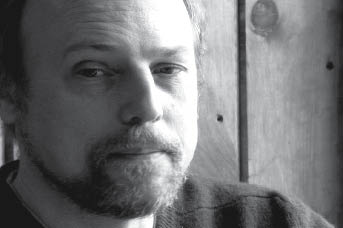Robert Franke

In December 2005, Robert Franke left his position as president of Forever Elmwood and moved west—about six blocks, to Grant Street, where in March 2006 he founded the Grant-Ferry Association. Franke is determined to apply the same self-starting tactics that helped to seed and sustain Elmwood’s resurgence to the Grant Street commercial district: sprucing up the street’s appearance, building a sense of community and commitment among business owners and, perhaps most importantly, inventorying and marketing available retail space. The goal, Franke says, is to reduce Grant’s current vacancy rate of 30 percent to five percent—and, in the process, to be one anchor in a resurgence of the entire Upper West Side, a rebirth that will make the most of the neighborhood’s burgeoning immigrant population, its relatively cheap rents, its proximity to Buffalo State College students and existing attractions such as Guercio’s & Sons.
Compare Grant Street to Elmwood Avenue, where you were active before.
Grant Street right now is looked at as a place that’s not so safe, not so attractive, not so desirable. Perception is often a lot different than reality, however, and I think if we start with the basics—we clean up the litter, we get rid of some of the blight—it totally changes people’s view of the street and helps it move forward. I mean, if you look outside here, we have dead trees sitting in tree wells here that have been dead four or five or six years. That would never happen on Elmwood, but it happens here a bit because Grant has no voice. Elmwood has got its own character, it serves its own population.
How do you imagine Grant Street developing?
Grant Street is never going to be a street of boutiques. It’s just not. But it could potentially be a street of a lot of ethnic food, ethnic markets, value-oriented businesses. We have a hardware store here that probably wouldn’t survive all that well on Elmwood.
So what does the association do attract business to the neighborhood?
Eventually it will evolve into basic economic development, but right now what we recognize is that there are a ton of services that are missing on the street. So the business recruitment group, the first thing that they started doing was inventorying the street: finding out what kind of buildings were available, what kind of spaces were available, square footage, rent. Are some places available for sale? Then they go out and actually try to match up buildings with potential entrepreneurs. A beautiful example is 431 Grant Street at the corner of Bird.
Tell us about that project.
I can’t tell you how excited I am about this particular project because it’s taking a derelict building, totally renovating it and putting in a new type of business—it’s not a rent-to-own business, it’s not a nail salon, you know, something that we already have a ton of. They’ll put in a restaurant that’s focused on a demographic that’s a little different than people think—they’re focused on Buff State a little bit. We don’t have a good connection with Buff State. It’s like we’re the stepchild, we’re the thing to be ignored. If you look at the way they planned the campus, at the southwest corner there’s that sea of surface parking. That makes it impossible for pedestrian-type traffic and effectively isolates the campus from this community.
What does Grant Street offer that’s unique in the city and the region?
If you walk down a street and you’re hearing all kinds of different languages, you can go into stores and get all sorts of different ingredients for cooking, or experience new things, it’s rich and it’s wonderful and it’s what makes living in the city a great thing. What we really want to do is hold our own and be a contributor to the overall picture of life in Western New York.
We’ll end up doing more good for this particular area in terms of investment than the city has done in decades.
|
Issue Navigation> Issue Index > v6n4: No Deposit No Return (1/25/07) > Robert Franke This Week's Issue • Artvoice Daily • Artvoice TV • Events Calendar • Classifieds |









 Current Issue
Current Issue